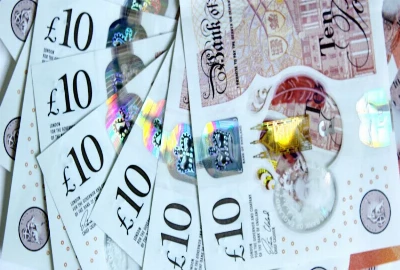Why Award Shows Are Stuck in 2010—and the One Change That’d Actually Shake Things Up

Award shows once stood as the pinnacle of cultural prestige—gathering millions of viewers around television screens to celebrate film, music, and television’s best. Think back to the early 2010s: memes were born from Jennifer Lawrence’s Oscar fall, Adele’s Grammy speeches trended for weeks, and red carpet looks dictated fashion headlines for months. Fast forward to 2025, and the buzz feels muted. Social media might amplify certain viral clips, but the cultural grip of award shows has undeniably loosened.
The issue isn’t just that audiences are watching less live television—it’s that award shows are stuck in 2010. From outdated broadcast formats to predictable celebrity rosters, they haven’t evolved alongside shifting media consumption habits. Audiences now demand inclusivity, transparency, and genuine connection, while award ceremonies still rely on scripted jokes, bloated runtimes, and backstage politics.
Why do these shows feel stale? Because they cling to traditions that no longer resonate in the streaming, TikTok-driven, authenticity-obsessed era. This post breaks down exactly why award shows feel outdated, and reveals the one change that could actually shake things up—not just adding more categories or hosts, but reimagining how they connect to audiences today.
If you’ve ever scrolled through highlights the next morning instead of sitting through a three-hour ceremony, this breakdown is for you. Let’s examine the cracks in the foundation and uncover what could truly revive them.
Why Award Shows Are Stuck in 2010
When we say award shows are “stuck in 2010,” we’re talking about more than just nostalgia—it’s about formats and priorities that haven’t evolved in over a decade. The way these events are produced feels anchored to an era when live broadcast television dominated the cultural landscape. But in 2025, where attention spans are fragmented across platforms, award shows still operate like everyone’s willing to sit through an hours-long telecast filled with commercials.
The Overlong, Overproduced Format
The standard three-to-four-hour runtime feels exhausting. Audiences now consume entertainment in short bursts, and sitting through filler segments and sponsor tie-ins feels unbearable. While a 2010 audience might have tolerated it as a “big night out at home,” today’s viewers drop in for highlights or scroll through Twitter recaps.
Predictable Winners and Industry Politics
For many viewers, the suspense has vanished. Thanks to industry leaks, critics’ predictions, and precursor awards (like the SAGs or Golden Globes), winners are often easy to guess. Combined with long-standing accusations of bias, lack of diversity, and opaque voting practices, audiences feel alienated.
Failure to Embrace Interactivity
In the 2010s, social media was just a companion to award shows—today, it is the show. Yet producers still treat platforms like TikTok, Instagram, and Twitter as add-ons rather than central elements. Viewers want to participate, vote, react, and even shape the show in real-time. Instead, they get one-directional speeches and montages.
Award shows remain tied to an outdated sense of prestige that no longer translates into modern relevance. Without acknowledging changing media habits, they risk becoming relics.

The Disconnect Between Award Shows and Audiences
One of the biggest reasons award shows feel stale is the growing disconnect between institutions and audiences. The gap lies not just in viewing preferences, but in values.
Audiences Crave Authenticity
We live in an era where creators stream from bedrooms and artists release music directly to fans on TikTok. Against that backdrop, award shows feel hyper-polished, overly scripted, and almost sterile. Acceptance speeches are often edited to fit time limits, cutting off the raw emotion fans crave. Compare that to viral unscripted moments—like Brendan Fraser’s tearful comeback or BTS breaking language barriers—those are what stick with audiences.
Lack of Representation and Diversity
Award shows have made some progress in recognizing underrepresented voices, but controversies around snubs and exclusion resurface every year. Whether it’s women directors being overlooked at the Oscars or non-English music being sidelined at the Grammys, audiences increasingly feel that institutions don’t reflect the diversity of modern storytelling. This erodes trust and makes celebrations feel hollow.
Relevance of the Content Being Honored
In 2010, traditional TV, radio, and theaters still dominated. In 2025, cultural relevance is defined by streaming hits, viral TikTok songs, YouTube creators, and indie projects. Yet award shows still prioritize legacy categories, ignoring where most people actually discover entertainment. Viewers feel left out when their favorite shows, songs, or creators don’t even get mentioned.
The result? People tune out. When audiences don’t feel seen, they don’t show up. Award shows become echo chambers for insiders rather than celebrations of the culture at large.

The One Change That’d Actually Shake Things Up
So, what’s the magic fix? It’s not shorter runtimes or trendier hosts. The one change that could transform award shows from outdated relics to cultural powerhouses is integrating audience participation into the core of the ceremony.
Interactive Voting Beyond “Fan Favorites”
Instead of token “fan-voted” categories, audiences should have meaningful voting power. Imagine fans shaping one of the top awards in real time, through secure digital platforms. It would blend prestige with populism, letting fans feel invested in the outcomes rather than alienated by insiders’ choices.
Multi-Platform Experiences
Award shows should stop thinking of themselves as TV events and instead as multi-platform experiences. Livestream clips on TikTok and YouTube, create AR red carpet filters on Instagram, and design second-screen apps for behind-the-scenes access. Younger audiences would engage actively rather than passively.
Elevating Emerging Creators
By recognizing viral hits, indie games, or YouTube shorts alongside traditional categories, award shows could feel culturally relevant again. Fans want to see their worlds validated, not just Hollywood’s. The Oscars and Grammys don’t need to dilute prestige to do this—they just need to acknowledge reality.
If award shows embraced this change—interactive, inclusive, and multi-platform—they’d feel alive again. The shift wouldn’t just modernize them; it would make audiences care again. After all, entertainment is no longer one-directional—it’s a conversation.

Actionable Tips for Reviving Award Shows
So how can organizers and producers put this into practice? Here are some actionable strategies for reviving award shows:
Shorten runtimes, expand reach. Instead of three-hour telecasts, break events into modular segments distributed online. Fans could watch categories they care about while skipping others.
Unscript the moments. Allow winners to speak authentically without harsh time limits. These genuine speeches often become the most viral, memorable moments.
Diversify categories. Introduce awards that reflect streaming, social media, and international influence. Recognizing creators across mediums will broaden audience appeal.
Embrace fan integration. Move beyond token “fan choice” awards. Create hybrid models where industry and audience votes both count toward top categories.
Use data creatively. Showcase cultural metrics—stream counts, viral trends, fan art—in presentations. It connects prestige with real-world cultural impact.
Make global participation seamless. With digital platforms, international fans can engage live. This would not only boost viewership but build a sense of community.
By combining prestige with participation, award shows can reclaim their relevance. Instead of being relics of 2010, they can become celebrations that actually reflect the way we consume and connect with art in 2025.




